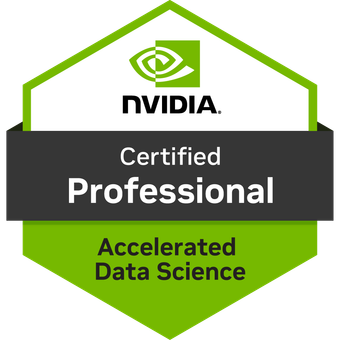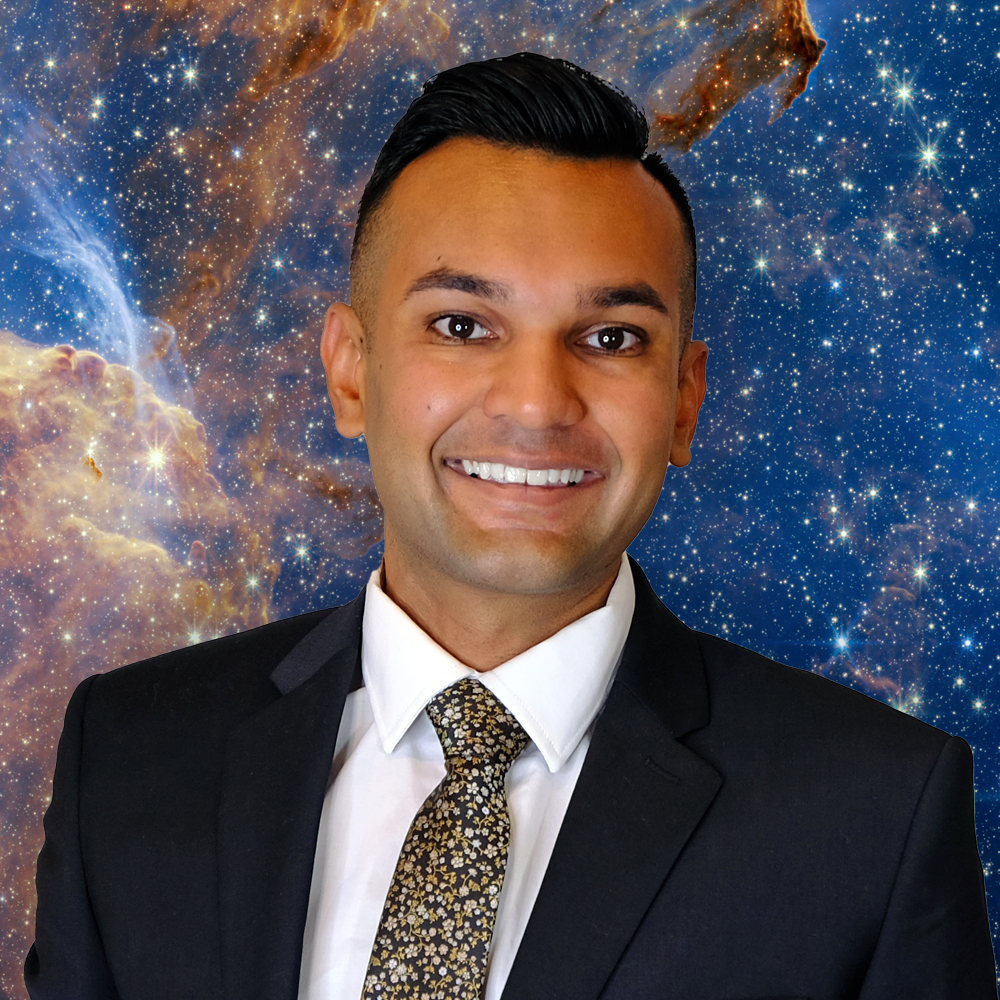As a computer scientist and machine learning engineer, my portfolio reflects my journey through prestigious institutions like M.I.T., Harvard Business School, Georgia Tech, and UCF. I specialize in areas of business, software, machine learning, and artificial intelligence, and have contributed to various projects and publications in these fields. My work often involves innovative applications of Python and other technologies, showcasing my commitment to solving complex challenges in AI and machine learning.
2. Contents
- Introduction
- Contents
- Projects
- Publications
- Programming Languages
- Credentials
- Personalilty
- Professional References
- Attributions
3. Projects
Go to Project PageDownload .zip
Language: Python
Dependencies: NumPy, Pandas, sklearn, keras, glob, matplotlib, cv2, tqdm, TensorFlow
Algorithms & Methods: Convolutional Neural Networks, Computer Vision, Transfer Learning,
Model Architecture, Deep Learning Data Pipeline
Go to Project PageDownload .zip
Language: Python
Dependencies: NumPy, Pandas, matplotlib, scikit-learn
Algorithms & Methods: Logarithmic Feature Scaling, Tukey's Method for Outlier Detection,
Principal Component Analysis, K-Means Clustering, Gaussian Mixture Clustering,
Cluster and Biplot Visualization
Go to Project PageDownload .zip
Language: Python
Dependencies: NumPy, Pandas, matplotlib, scikit-learn
Algorithms & Methods: Normailizing Numerical Features, Precision and Recall (Sensitivity),
Gaussian Naive Bayes, Decision Tree Classifier, Ensemble Methods (Bagging, AdaBoost,
Random Forest, Gradient Boosting), KNeighbors, Support Vector Machines,
Training and Predicting Pipeline, Grid Search Model Tuning, Extracing Feature Importance
Go to Project PageDownload .zip
Language: Python
Dependencies: NumPy, Pandas, matplotlib, scikit-learn
Algorithms & Methods: Q-Learning, Simulating Enviornment, Optimal Policies, Learning Rates,
State Space
Go to Project PageDownload .zip
Language: Python
Dependencies: NumPy, Pandas, matplotlib, scikit-learn
Algorithms & Methods: Feature Predictions, Decision Tree Classifier,
Grid Search Model Tuning, K-Fold Cross Validation Training
Go to Project PageDownload .zip
Language: Python
Dependencies: NumPy, Pandas, matplotlib, scikit-learn
Algorithms: Feature Predictions, Decision Tree Classifier
4. Publications
Analyzing the Existing Undergraduate Engineering Leadership Skills
Dr. Hamed M. Almalki, Dr. Luis Rabelo, Charles Davis, Hammad Usmani, Dr. Debra Hollister, Dr. Alfonso Sarmiento
A Deep Recurrent Neural Network to Forecast the Intensity and Trajectory of Atlantic Tropical Storms (2019)
Hammad Usmani, Georgia Institute of Technology, Atlanta, GA
This study presents a bidirectional deep recurrent neural network (BDRNN) utilizing LSTM cells to forecast Atlantic storm trajectories and intensity, outperforming statistical baselines like OCD5. Developed with HURDAT2 data, the BDRNN offers timely and precise emergency planning, highlighting the importance of advanced forecasting models in storm preparedness.
Read More Recorded PresentationGlobal Synthetic Weather Radar in AWS GovCloud for the U.S. Air Force (2020)
Mark S. Veillette, Haig Iskenderian, Patrick M. Lamey, Christopher J. Mattioli, Ashish Banerjee, Mark Worris, Alexander B. Proschitsky, Richard F. Ferris, Artyom Manwelyan, Shibi Rajagopalan, Hammad Usmani, Thomas E. Coe, Jennifer E. Luce, Blaine A. Esgar
The U.S. Air Force, in collaboration with MIT Lincoln Laboratory, is advancing a machine learning tool for generating global radar-like mosaics for flight operations. Using data from lightning, the GALWEM model, and weather satellite images, a convolutional neural network creates global synthetic weather radar mosaics. Transitioned to the AWS GovCloud, it facilitates real-time evaluation and aids Air Force decision systems. The project entails capability development, cloud integration, user feedback, and ensuring sustainable machine learning practices.
Read MoreA Deep Neural Network to Globally Forecast the Track and Intensity of Tropical Cyclones (2020)
Hammad Usmani, Aadil Habibi, Daanish Habibi
As tropical cyclones intensify with global warming, this study harnesses machine learning to predict their tracks and intensities. Utilizing the IBTrACS database and NCEP/NCAR Surface Temperature imagery, a deep neural network combining recurrent and convolutional layers is developed. An accompanying web application delivers forecasts, outperforming the NHC's statistical baseline for Atlantic storms. The open-source tool aims to aid both professionals and amateurs in tropical cyclone predictions, fostering better preparedness.
Read MoreGlobal Synthetic Weather Radar Capability in Support of the U.S. Air Force (2019)
Haig Iskenderian, Mark S. Veillette, Christopher J. Mattioli, Patrick M. Lamey, Eric P. Hassey, Ashish Banerjee, Mark Worris, Kendrick Cancio, Shibi Rajagopalan, Hammad Usmani, John P. Dreher, Nessa Hock, John Radovan
The U.S. Air Force and MIT Lincoln Laboratory have collaborated to develop a synthetic weather radar capability, addressing global areas with limited weather data. This system utilizes a machine learning framework with inputs from global lightning, GALWEM numerical model, and weather satellite images to generate radar mosaics and forecasts up to 12 hours. It aims to enhance the Air Force's decision support systems. The presentation provides insights and outcomes from this partnership.
Read More Recorded PresentationMultivariate LSTM Approach to Hurricane Intensity and Tracking Predictions (2021)
Akash B. Patel, Hammad Usmani, Jonathan C. Brant
In the backdrop of climate change and global warming intensifying hurricane conditions, there's an urgent need for real-time prediction of hurricanes and tropical storms. This research leverages deep learning, comparing a multivariate LSTM network with univariate LSTMs for hurricane prediction. The study utilizes data from IBTrACS version 4, hosted by NOAA. The research evaluates the effectiveness of Bidirectional LSTM networks and showcases the superiority of the multivariate model in predicting hurricane trajectories and intensities using MAPE. The outcome aids timely allocation of emergency resources and better preparation for adverse weather conditions.
Read MoreGlobal Synthetic Weather Radar in AWS GovCloud for the US Air Force (2020)
Mark S. Veillette, H. Iskenderian, P. M. Lamey and co-authors
The US Air Force and MIT Lincoln Laboratory collaborate to produce a machine learning application creating global radar-like mosaics for pre-flight planning and execution. Drawing on various data sources, a convolutional neural network designs synthetic weather radar mosaics, integrated with GALWEM for up to 12-hour radar-forward forecasts. The system, in development for AWS GovCloud, capitalizes on extensive cloud compute and storage resources, feeding into Air Force decision aids like WxCC and AFW-WEBS viewer. The initiative represents a pioneering move to transit a mature ML system to AWS GovCloud. The project's facets include capability inception, AWS GovCloud development, training with feedback, and upholding ML "best practices" for sustained functionality post-transfer.
Read MoreP.A.M. - Personal Assistant Machine
Loebner Prize 2017 Entry
A recurrent neural network large language model that is multilingual.
View ResultsHammad Usmani
5. Programming Languages
6. Credentials

NVIDIA-Certified Professional: Accelerated Data Science
Validates expertise as a Data scientist, Data engineer, Machine learning engineer, AI DevOps engineer, Applied data scientist, Software engineer, Solution architect, Deep learning performance engineer, and Research positions.
- September 2025 to September 2027
Microsoft Certified: Azure AI Engineer Associate
This certifies expertise to Plan and manage an Azure AI solution, Implement decision support solutions, Implement computer vision solutions, Implement natural language processing solutions, Implement knowledge mining and document intelligence solutions, and Implement generative AI solutions.
- February 26, 2024 to February 26, 2026

Google Cloud Generative AI
Complete courses titled Introduction to Generative AI, Introduction to Large Language Models (LLM) and Introduction to Responsible AI. This certifies expertise of products including Vertex AI.
- June 25, 2023
Harvard Business School Online: Entrepreneurship Essentials
Entrepreneurship Essentials is a 4-week, 30-hour online certificate program from Harvard Business School. Entrepreneurship Essentials introduces participants to the entrepreneurial journey from finding an idea to gaining traction in the marketplace to raising capital for a venture. Participants learn an overarching framework—People, Opportunity, Context, Deal—to evaluate opportunities, manage start-ups, and finance ventures.
- 2020
- Complete

Udacity Nanodegree Machine Learning Engineer
Machine learning represents a key evolution in the fields of computer science, data analysis, software engineering, and artificial intelligence.This program teaches how to become a machine learning engineer, and apply predictive models to massive data sets in fields like finance, healthcare, education, and more.
- Summer 2018
- Nanodegree
Harvard Business School Online: Credential of Readiness
Harvard Business School Online CORe (Credential of Readiness) is a 150-hour certificate program on the fundamentals of business from Harvard Business School. CORe is comprised of three courses—Business Analytics, Economics for Managers, and Financial Accounting—developed by leading Harvard Business School faculty and delivered in an active learning environment based on the HBS signature case-based learning model.
- July, 2017
- Pass

Big Data - Programming
The badge holder demonstrates the ability to use programming concepts provided by the various technologies in the Hadoop ecosystem including, but not limited to MapReduce and Pig.
- May, 2016

Big Data Foundations
This badge holder has a basic understanding of Big Data concepts and their applications to gain insight for providing better service to customers. The learner understands that Big Data should be processed in a platform that can handle the variety, velocity, and the volume of data by using components that requires integration and data governance.
- December, 2015

Big Data Hadoop Foundations
This badge holder has a basic understanding of Hadoop. The badge holder can describe what Big Data is and the need for Hadoop to be able to process that data in a timely manner. The individual can describe the Hadoop architecture and how to work with the Hadoop Distributed File System (HDFS) both from the command line and using the BigInsights Console that is supplied with IBM BigInsights.
- April, 2016
Personality

Myers Briggs Type Indicator
I am an ENTJ (Extroverted Intuitive Thinking Judging) according to an assessment from 16personalities.com

Professional References
Hammad is a hard working programmer with managerial and leadership skills. Besides his superior technical skills, his communication skills are outstanding too. I recommend him in all technical and managerial positions.
- halmalki@knights.ucf.edu
Hammad has exceptional capability at conceptualization of a project which was based on the innovative technologies and sophisticated engineering that was required to accomplish it. He has got a sharp eye for detailings, expertise in managing the overall concept to realization of the same! I personally recommend him to anyone seeking a good balance between expertise and a good human being! May God bless him in life and every endeavor he's associated with!
- akashd.cwg@gmail.com
Hammad is detail-oriented and committed to success in whatever role he is in.
- saadu.usmani@gmail.com
As a manager of Hammad, I am proud to say he provided a unparalleled level of service for the company. With an unwavering work ethic and proactive approach to solving problems, Hammad served as a shining example for the rest of the team to excel service level agreements.
- abdur.rahman@k3solutions.net
Hammad is a tenacious computer scientist that exemplified entrepreneurship and produced excellent work.
- s.verma2907@gmail.com
I've never met anyone in my career with the same passion and drive as Hammad. He really embodies the leadership principal of "learn and be curious". When I worked with him at MIT Lincoln Laboratory, he consistency delivered new and innovative tools to our team. From those tools we were able to engage with our customers at a more profound level that ultimately led to wider adoption and follow-on efforts.
Hammad has demonstrated exceptional leadership and teamwork skills during the time I worked with him at a non-profit organization. He has showcased an ability to confidently lead a team in an unfamiliar situation.
- aap2218@cumc.columbia.edu
Hammad is an exceptional talent in the realm of Artificial Intelligence and Data Engineering. During our time working together, I was consistently impressed by their expertise in R&D, especially within the weather and environmental sectors. Hammad's Python programming skills are top-notch, and they consistently deliver results that exceed expectations. Anyone would be fortunate to have Hammad as part of their team. Although he's proven himself in the weather and environmental sectors, he would thrive in any sector he decides to pursue.
- mohammed090909@gmail.com